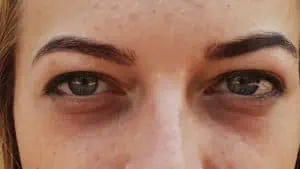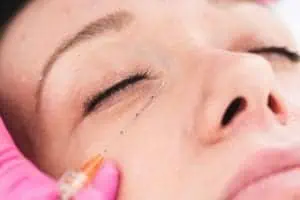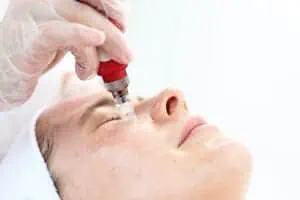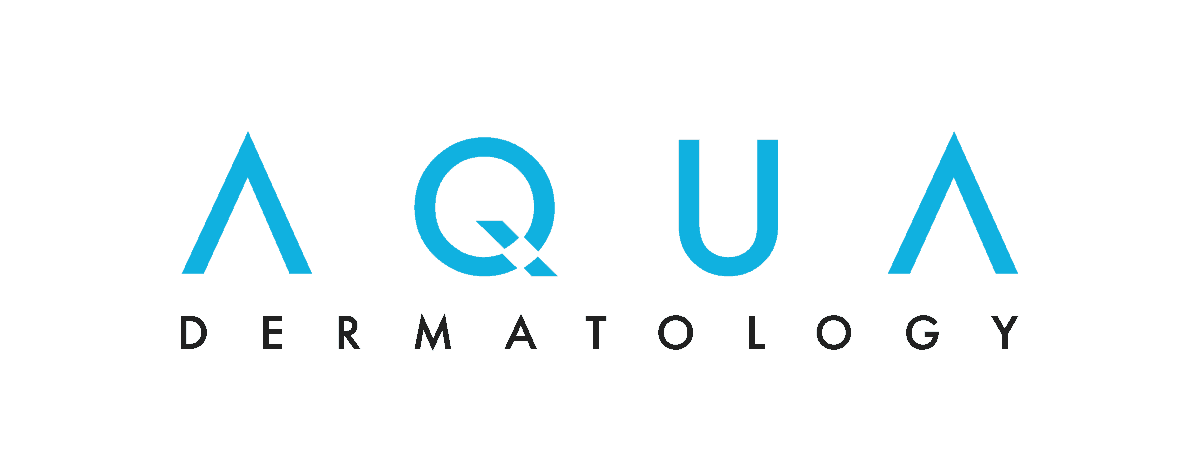
No one wants to look like they pulled an all-nighter, but dark circles under your eyes can make you look exhausted, even when you aren’t. “They’re a common concern among people of all ages,” said Kimberly Van Keuren, director of cosmetic services at Water’s Edge Dermatology.
As cosmetic issues go, under-eye circles can be tricky to treat. For starters, the skin under the eyes is delicate — it’s the thinnest skin on the entire body. And since there may be more than one cause of your dark circles, you may need more than one type of treatment.
Causes of dark circles
Why do those annoying dark circles occur in the first place? Causes of under-eye darkness include:
- Genetics. The tendency to have too much brown pigment under the eyes may be hereditary. It’s more common in people with darker skin. Sun exposure, which stimulates the production of this pigment, can make the circles appear darker. In people with fairer, thinner skin, blood vessels may be more visible, especially under the eye, and they can give the area a blue or purple hue.
- Tear trough deformity. Everyone has a natural depression where the lower eyelid meets the cheek, known as a tear trough. Tear troughs begin near the nose and run outward and downward. In some people, the trough takes the form of a deeper groove that appears dark. This groove, known as a tear trough deformity, can result from inherited differences in facial anatomy. It can also occur with age as the fat that cushions the under-eye area shrinks and skin loses elasticity.
- Aging. With age, the skin loses collagen, the protein fibers that support it, and it begins to thin. The result: Underlying blood vessels may show through. Sun exposure speeds the process by breaking down collagen.
- Allergies. Have hay fever? Allergic to dust mites? Allergens trigger the release of a chemical called histamine that can dilate blood vessels and cause increased blood flow under the eyes. The resulting darkness, which resembles a bruise, is sometimes called an “allergic shiner.” Histamine can also lead to puffiness, which is one reason under-eye darkness and puffiness often go hand in hand. An antihistamine can help tame allergies.
- Lack of sleep. Too little shuteye doesn’t cause under-eye circles, but it can make them look worse. “When you don’t get enough sleep, skin can become paler, so any darkness you already have becomes more obvious,” said Van Keuren. Lack of sleep can also trigger a buildup of fluid underneath the eyes, and the resulting puffiness can cast shadows.
What you can do
While the main causes of under-eye circles — genetics and bone structure — are beyond your control, there are effective ways to minimize them. An experienced provider can determine the right treatment for you. Here’s a rundown of the options.
Eye creams
Eye creams that contain certain ingredients, such as retinol and peptides, increase collagen, which boosts the structural integrity of the area. Retinol also helps fade hyperpigmentation, as do ingredients such as vitamin C, arbutin (a botanical extract), kojic acid (a compound derived from mushrooms), licorice and niacinamide (a form of vitamin B). Caffeine can also help dark circles look lighter by constricting blood vessels.
“A good-performing eye cream can make a big difference,” said Van Keuren. She recommends wederm Fill In the Eye Lines, which contains retinol, peptides, niacinamide and caffeine. It also has light reflectors to make the area look brighter.
Dermal fillers

Chemical peels
Chemical peels remove the top layer of skin and stimulate collagen production, yielding new skin that’s smoother and more even in color and tone. “At Water’s Edge, our professionals start with an all-over chemical exfoliation to make sure the skin is completely even, then they go back and touch up the under-eye area,” Van Keuren said. Whether your dark circles are caused by excess melanin or blood vessels showing through thin skin, a chemical peel may be a good option.
Microneedling

Fractionated laser skin resurfacing
Laser skin resurfacing using a fractionated laser is the most aggressive treatment for under-eye circles. It creates thousands of microscopic wounds in the skin, leaving the area around each one intact to allow the skin to heal faster. The wounds stimulate collagen production, so skin is tighter and smoother and imperfections aren’t as noticeable. This treatment option can cause hyperpigmentation in darker skin tones and requires about a week of downtime, so it’s not right for everyone.
Tips for success
Keep in mind that to get the best results, you may need a combination of different treatments, especially as you get older. This holds true for eye circles and other cosmetic issues. “As you start aging, you often have to start adding different components into the mix for the best results and to make sure everything looks balanced and natural,” said Van Keuren.
Whatever treatment you decide to pursue, remember to always protect yourself from the sun by using a broad-spectrum sunscreen, covering up and seeking shade between 10 a.m. and 4 p.m. This will help you maintain the results gained from your treatment. “If you don’t protect your skin from the sun, you’re just wasting your money,” said Van Keuren.
Article Written By: Karyn Repinski, a Brooklyn, NY-based award-winning health and beauty writer.





